Table of Contents
Who doesn’t like a breath of fresh air? And if you’re in Delhi NCR, rest assured it is on top of all the things you want all year round. But situations around us often do not allow us to breathe easily despite leading a healthy life. The top reasons for this are:
If the above list is triggering you in any way, then just follow the simple mantra that pulmonary rehab specialists tell all their patients: Out with the stale old air, in with fresh new air. Keep repeating this until you’re breathing easy again. See how that escalated? Now coming back to the question: what is the need for breathing exercises? The simple answer is that it ensures our lungs receive and circulate enough oxygen in our body efficiently. This will in turn improve your blood flow and keep all your muscles and your heart healthy for a long time.
First, let’s understand how breathing works. With healthy lungs and respiratory systems, breathing is effortless. When you breathe in, notice how your stomach lifts up and goes down when you breathe out. That is not your stomach but your diaphragm. It is responsible for 80% of the entire breathing process. So it takes in the air and spreads the oxygen to the lungs and sends out the waste air or carbon dioxide.
Now let us understand how the breathing problem starts. Over time, due to reasons stated earlier, the stale air builds up, leaving limited room for the diaphragm to contract and let in fresh oxygen. With the diaphragm not giving the capacity it should, the body relies on the neck, back and chest to breathe right. But you can’t make a fish fly. So gradually the oxygen levels lower further, making us more lethargic and tired, leaving less reserve for exercise and activity.
To make sure the above does not happen or the chances of it are reduced significantly, we must practice regular breathing exercises to help our lungs get rid of accumulated stale air, maintain optimum oxygen levels and keep the diaphragm healthy and pumping for a long time.
Advantages: Reduces the number of breaths, keeps your airways clear longer, ensures frequency of inhaling more fresh air and improves oxygen and carbon dioxide exchange.
Who can do it: Basic exercise for all beginners. Do it at least 5 to 10 times per day
How to do it: Simply count to 3 to inhale through your nose and count 6 to exhale through your mouth by pursing your lips.
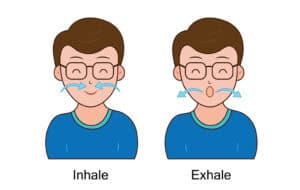
Advantages: Helps inhale more air, keeps your diaphragm muscles good, improves lung capacity
Who can do it: This is particularly suited for people with chronic obstructive pulmonary disease (COPD). In their case, the diaphragm is weak and needs to be strengthened.
How to do it: Simply count to 5 to inhale through your nose and breathe out through your mouth as you count to 8. Make sure your belly fills up with air. Put a lightweight item on your belly, to observe that it rises and falls with every breath.
Note: Keep your neck and shoulders relaxed to ensure your diaphragm gets the right support. Perform this technique when feeling rested.
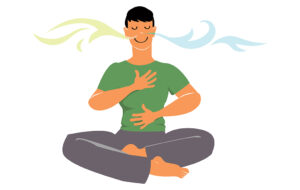
Advantages: Helps ease your air passage especially if you suffer from asthma.
Who can do it: Anyone can do this. It is particularly suited for people with asthma problems. Studies suggest that mouth breathing leads to severe asthma symptoms. Breathing through the nose adds warmth and humidity to what you inhale keeping a check on this.
How to do it: Same as normal deep breathing. Just breathe in and out from your nose.
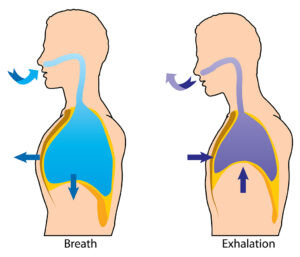
Advantages: Helps manage stress, anxiety attacks and asthmatic tendencies.
Who can do it: Asthma patients. This is an old relaxation training technique. It teaches you how to breathe slowly and steadily from your diaphragm to your nose.
How to do it: It combines diaphragmatic breathing with relaxation techniques and exercises to improve an asthma patient’s quality of life.
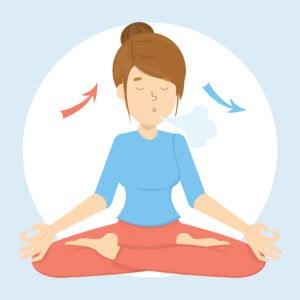
Advantages: Helps manage stress, anxiety attacks and asthmatic tendencies.
Who can do it: Asthma patients. This is ideal to manage tendencies of hyperventilation and help get off medication.
How to do it: This is a slow breathing technique with a control pause and maximum pause. Straighten your spine. Exhale and hold your breath. With your index finger and thumb, plug your nose till you get the urge to inhale again. This is the control pause. Now take 10 normal breaths. Try repeating the control pause for twice as long. This is the maximum pause. Follow it with 10 more normal breaths.

Advantages: Improves lung function and controls asthma
Who can do it: Primarily asthma patients, but applicable to all.
How to do it: Yoga combines movement with deep breathing. This has to be done under proper guidance by a yoga instructor. Patients recovering from respiratory disorders greatly benefit from rehabilitating their lungs.

Advantages: Improves performance and concentration, and helps reduce stress.
Who can do it: Hugely beneficial to people with COPD and those in high-performance jobs like sports or the armed forces.
How to do it: Often called square breathing, it is a technique of taking slow, deep breaths. Sit with your spine straight. Inhale on a count of 4, hold your breath till you count another 4, then exhale on the count of 4 and hold your breath again, for equal counts. This is called Sama Vritti, or equal breathing.
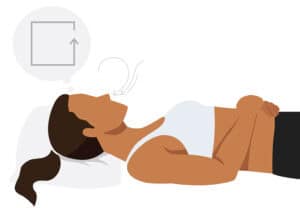
Improved Lung Capacity: First let us understand what we mean when we say the term low lung capacity.
Low lung capacity is the lowered capability of the lungs to hold air in them. The primary cause of this is ageing, as our bodies tend to slow down all functions over time. Other potential causes can be:
Normal lung capacity changes from time to time, throughout our lives. However, the maximum lung capacity can be up to 6 litres. A pulmonologist will measure your lung capacity using a spirometry test. The levels will show whether your lungs are healthy or if there are indications of asthma, COPD and other breathing disorders.
To ensure you have a good spirometry outcome practice breathing exercises, improve lung capacity and breathe easy. It usually takes weeks of regular exercise to see an improvement. The more disciplined you are the better your outcomes.
Prevention is always better. Exercises help when you make subtle lifestyle changes to support it. This way you can keep your lungs healthy for a longer time.
In conclusion, these are all preventive measures to help protect and rehabilitate your lungs to stay healthy and functioning. However, in case of any kind of problem do get proper medical advice from a professional ENT or Pulmonologist. If you have any concerns regarding your respiratory health do reach out to us at the CK Birla Hospital or book an appointment with Dr. Kuldeep Grover.